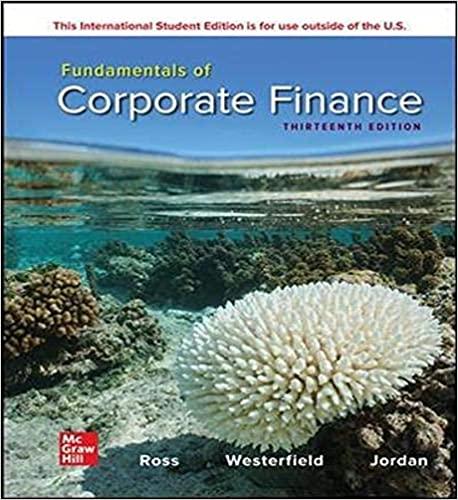Answered step by step
Verified Expert Solution
Question
1 Approved Answer
Use the following information for Ingersoll, Inc., (assume the tax rate is 34 percent): 2014 2015 Sales $ 9,835 $ 10,409 Depreciation 1,325 1,326 Cost
| Use the following information for Ingersoll, Inc., (assume the tax rate is 34 percent): |
| 2014 | 2015 | |||
| Sales | $ | 9,835 | $ | 10,409 |
| Depreciation | 1,325 | 1,326 | ||
| Cost of goods sold | 2,896 | 3,260 | ||
| Other expenses | 839 | 734 | ||
| Interest | 725 | 803 | ||
| Cash | 4,309 | 5,403 | ||
| Accounts receivable | 5,639 | 6,327 | ||
| Short-term notes payable | 994 | 946 | ||
| Long-term debt | 15,560 | 18,050 | ||
| Net fixed assets | 36,455 | 37,857 | ||
| Accounts payable | 4,716 | 4,385 | ||
| Inventory | 9,870 | 10,138 | ||
| Dividends | 1,156 | 1,251 |
| Prepare an income statement for this company for 2014 and 2015.(Do not round intermediate calculations. Round your answers to 2 decimal places, e.g., 32.16.) |
| Ingersoll, Inc., Income Statement | |||||
| 2014 | 2015 | ||||
| (Click to select)EBITDividendsSalesAdditions to REInterest | $ | $ | |||
| (Click to select)InterestCost of goods soldEBITAdditions to REDividends | |||||
| (Click to select)Additions to REDividendsEBITInterestOther expenses | |||||
| (Click to select)InterestDepreciationDividendsAdditions to REEBIT | |||||
| (Click to select)Other expensesSalesCost of goods soldEBITAdditions to RE | $ | $ | |||
| (Click to select)InterestCost of goods soldAdditions to REOther expensesSales | |||||
| (Click to select)Other expensesEBTCost of goods soldSalesInterest | $ | $ | |||
| (Click to select)TaxesCost of goods soldSalesOther expensesAdditions to RE | |||||
| (Click to select)Net incomeNet loss | $ | $ | |||
| (Click to select)InterestDividendsDepreciationTaxesSales | $ | $ | |||
| (Click to select)DepreciationTaxesAdditions to RESalesInterest |
| Prepare thebalance sheet for this company for 2014 and 2015.(Do not round intermediate calculations. Be sure to list the accounts in order of their liquidity.) |
| Ingersoll, Inc. Balance Sheet as of Dec. 31 | |||||
| 2014 | 2015 | ||||
| Assets | |||||
| (Click to select)Accounts payableOwners' equityCashLong-term debtNotes receivableNet fixed assetsNotes payable | $ | $ | |||
| (Click to select)Net fixed assetsAccounts payableAccounts receivableLong-term debtNotes receivableNotes payableOwners' equity | |||||
| (Click to select)Notes payableLong-term debtInventoryNet fixed assetsOwners' equityAccounts payableNotes receivable | |||||
| Current assets | $ | $ | |||
| (Click to select)Accounts payableAccounts receivableNotes payableNet fixed assetsCashLong-term debtInventory | |||||
| Total assets | $ | $ | |||
| Liabilities | |||||
| (Click to select)Accounts payableLong-term debtCashOwners' equityNet fixed assetsAccounts receivableNotes receivable | $ | $ | |||
| (Click to select)CashAccounts receivableNet fixed assetsNotes receivableNotes payableLong-term debtOwners' equity | |||||
| Current liabilities | $ | $ | |||
| (Click to select)Net fixed assetsNotes receivableAccounts receivableLong-term debtAccounts payableNotes payableCash | |||||
| (Click to select)Accounts receivableNotes payableAccounts payableNet fixed assetsOwners' equityCashNotes receivable | |||||
| Total liabilities & owners' equity | $ | $ | |||
Step by Step Solution
There are 3 Steps involved in it
Step: 1

Get Instant Access to Expert-Tailored Solutions
See step-by-step solutions with expert insights and AI powered tools for academic success
Step: 2

Step: 3

Ace Your Homework with AI
Get the answers you need in no time with our AI-driven, step-by-step assistance
Get Started


